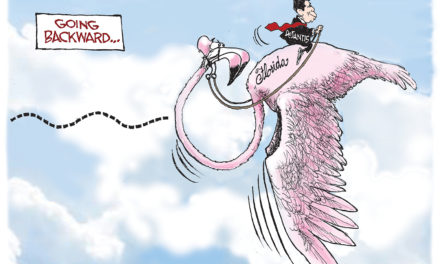There’s been speculation in the school consolidation campaign about the reason city taxpayers starting funding schools.
Some “county” school officials have suggested that Memphis began funding schools because it wanted to provide extra money for city students.
Perhaps, it began for the simplest of reasons: Memphis Schools organized before Shelby County Schools.
County Schools
Memphis’ system of public schools organized in 1848, 23 years before Shelby County set up a school system. In the county system, the education of students was complicated by the general apathy of parents.
That was the opinion of the county school commissioners in a report issued January 14, 1871.
The previous year, in accordance with an act of the Tennessee Legislature, the population between the six and 21 years old were counted to determine the scholastic population of the county. There were 1,743 Caucasians and 2,053 African-Americans.
Organizing the schools was slow work, but finally, one school was organized. School commissioners were elected for each district of the county. Those district commissioners then received money from the county trustee. A typical amount was that appropriated for the Second District where the commissioners received $566.25, which included $432 for instruction, $6 for house rent, 75 cents for two loads of wood, and 50 cents for water.
Teaching in some districts lasted for four months and in some, there were no schools for African-Americans for want of a house in which to meet. The commissioners complained that the public generally had not seen the advantages of free public schools and underappreciated public education.
By 1886, things had really picked up in the county schools. By then, there were 14,378 Caucasian students in 69 schools and 19,590 African-American students in 79 schools in the county’s 19 school districts. The school fund for the year totaled $75,812.29.
Memphis Schools
Decades earlier, Memphis set up its school system.
In early 1848, a system of free schools in Memphis was set up with a school in each ward of the city. The first school was at Third and Overton and a second school at Main at Overton. Teachers earned $30 a month and assistant teachers half that much.
In that same year, the Memphis board of aldermen divided the city into districts with two schools in each, set the school tax as one-eighth of the city revenues, opened them up to all white children between six and 16, and established a School Board of Managers with the mayor, two aldermen, and two citizens.
The first superintendent of Memphis schools, Col. J.W.A. Pettit, took office in July, 1848. He served without pay for two years. Then, his salary was set at $600 a year. Called the “father of the Memphis public schools,” he stayed superintendent until June, 1852. By summer, 1851, the system had 12 schools with 580 pupils and a budget of $4,891.50.
In 1856, Memphis City Schools was incorporated by an act of the Legislature. After incorporation, the mayor and board of aldermen appointed a member from each city ward and one at-large member for the entire city. By the end of the Civil War, the city district had 2,419 students. The total cost of schools was $45,474.
In 1869, the “colored schools” were incorporated with the white schools, and Board President J. T. Leath said: “Imbued and closed as our colored friends are with all the immunities of citizens, they should be qualified by education and moral training to perform all their duties to society, to their country, and to their Maker.”
By 1874, 1,565 of the 3,902 African-American children of school age attended class.



